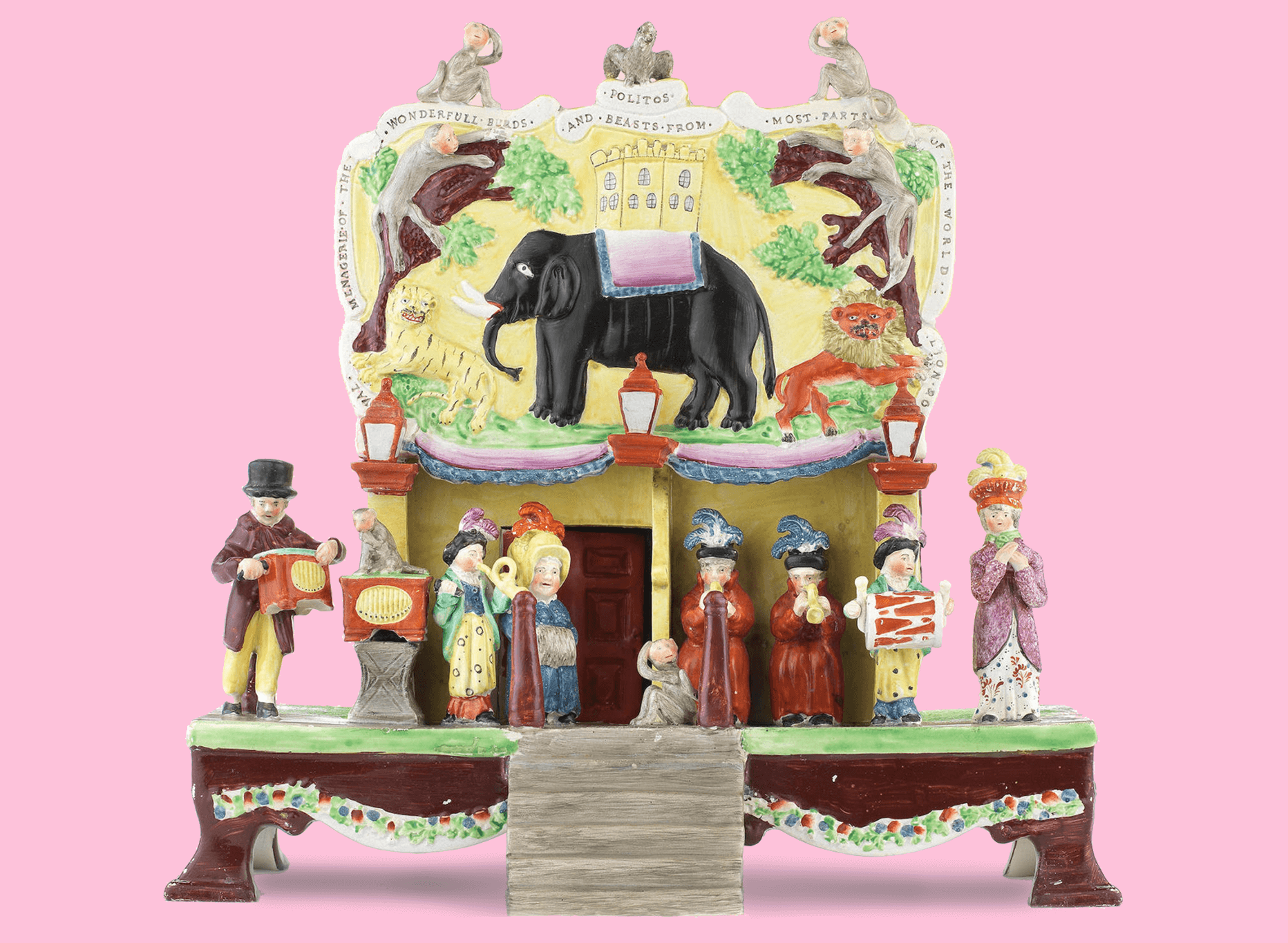Fox and monkey
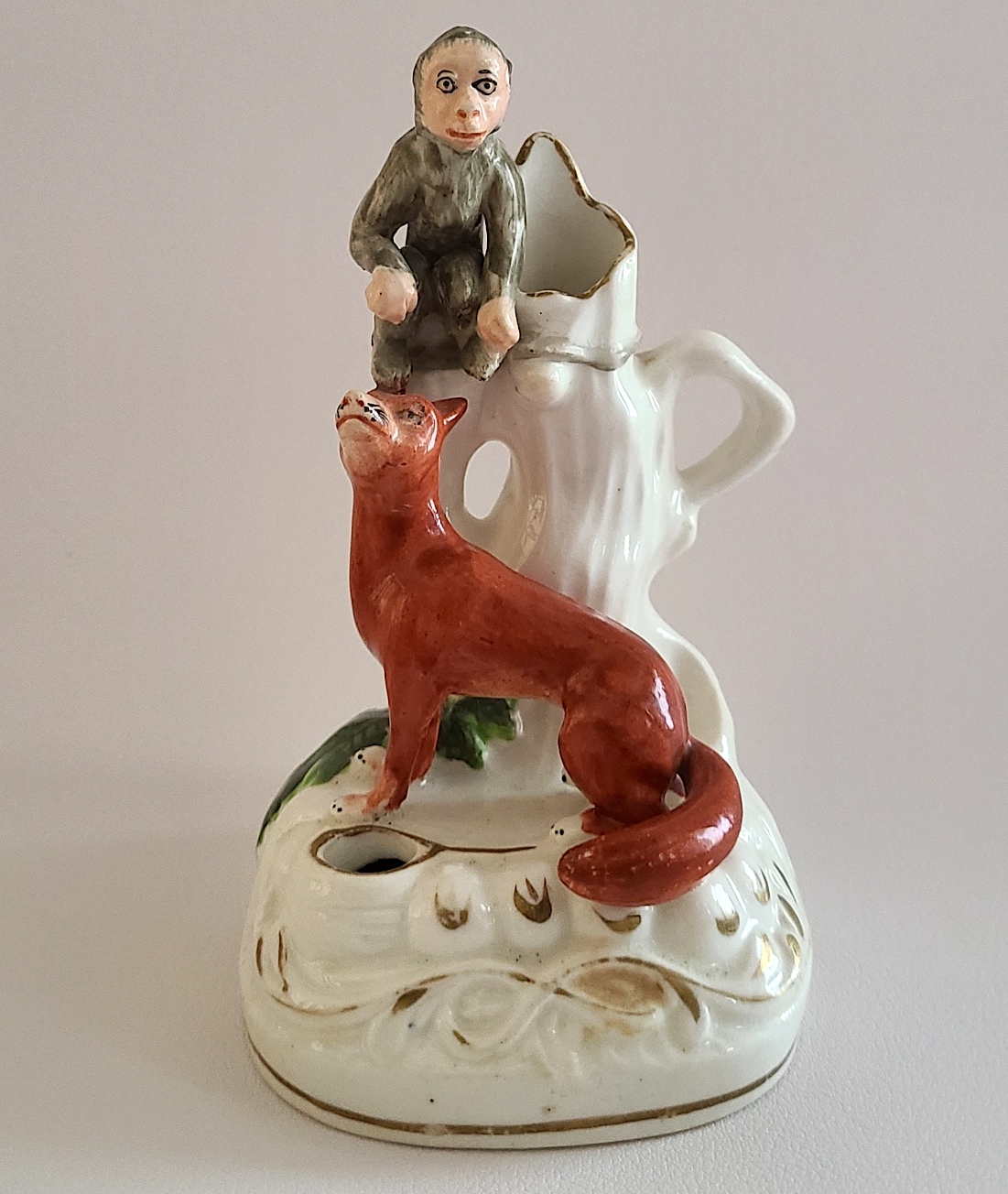
What an interesting figure of a fox and monkey, 4 3/4” tall. The figure is rare and probably represents one of Aesop’s Fables called “The Fox and the Monkey”.
It is circa 1840, partially painted in the round, and has a solid base. Other Aesop’s Fables’ Staffordshire figures with foxes can be found in Harding Book Two, pages 339-340, figures 3346 D, E and F.

The story of “The Fox and the Monkey” from Aesop’s Fables
One day Monkey dances for all the animals. His dancing is so entertaining, the animals make him King. Only Fox is not impressed. She comes across a hunter’s trap set with meat and tricks Monkey into believing she has discovered a bountiful feast in the forest, ready for him to claim for the animals. As soon as Monkey sees the meat he greedily pounces on it, trapping his paw. Angry and in pain, Monkey blames Fox for deceiving him, but Monkey’s selfishness and naivity is just more proof to Fox that Monkey is not fit to be King. “A ruler needs many talents,” says Fox.
More Figures of the month

Rare figure of Victorian card playing
At first glance, this may appear to be an ordinary arbour figure. But upon closer inspection, one can see these three people are engaged in a game of cards.
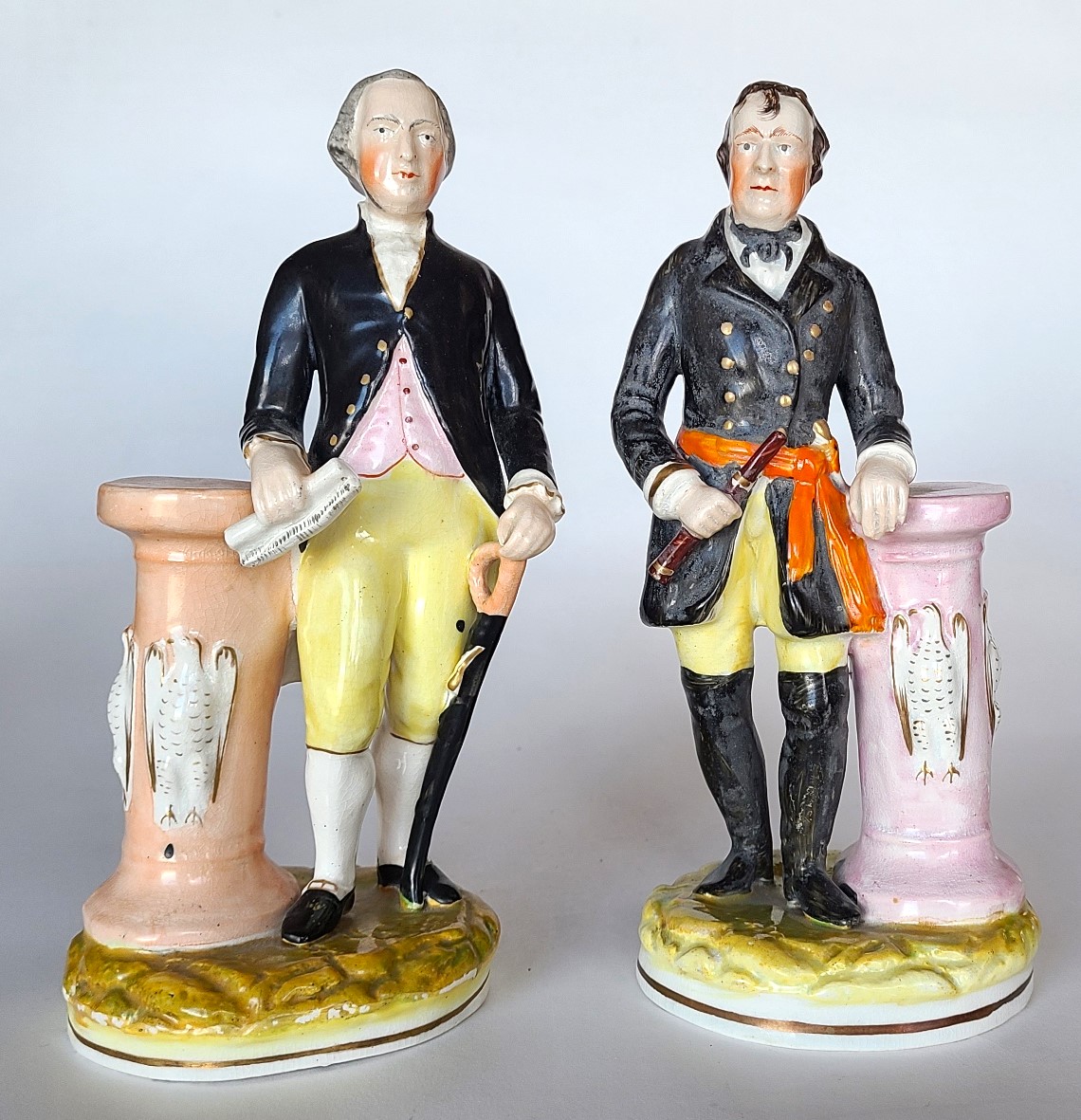
George Washington and Zachary Taylor
This is a very rare pair of figures portraying George Washington and Zachary Taylor. They stand approximately 9” and 9.1″ tall, and date to approximately 1850.
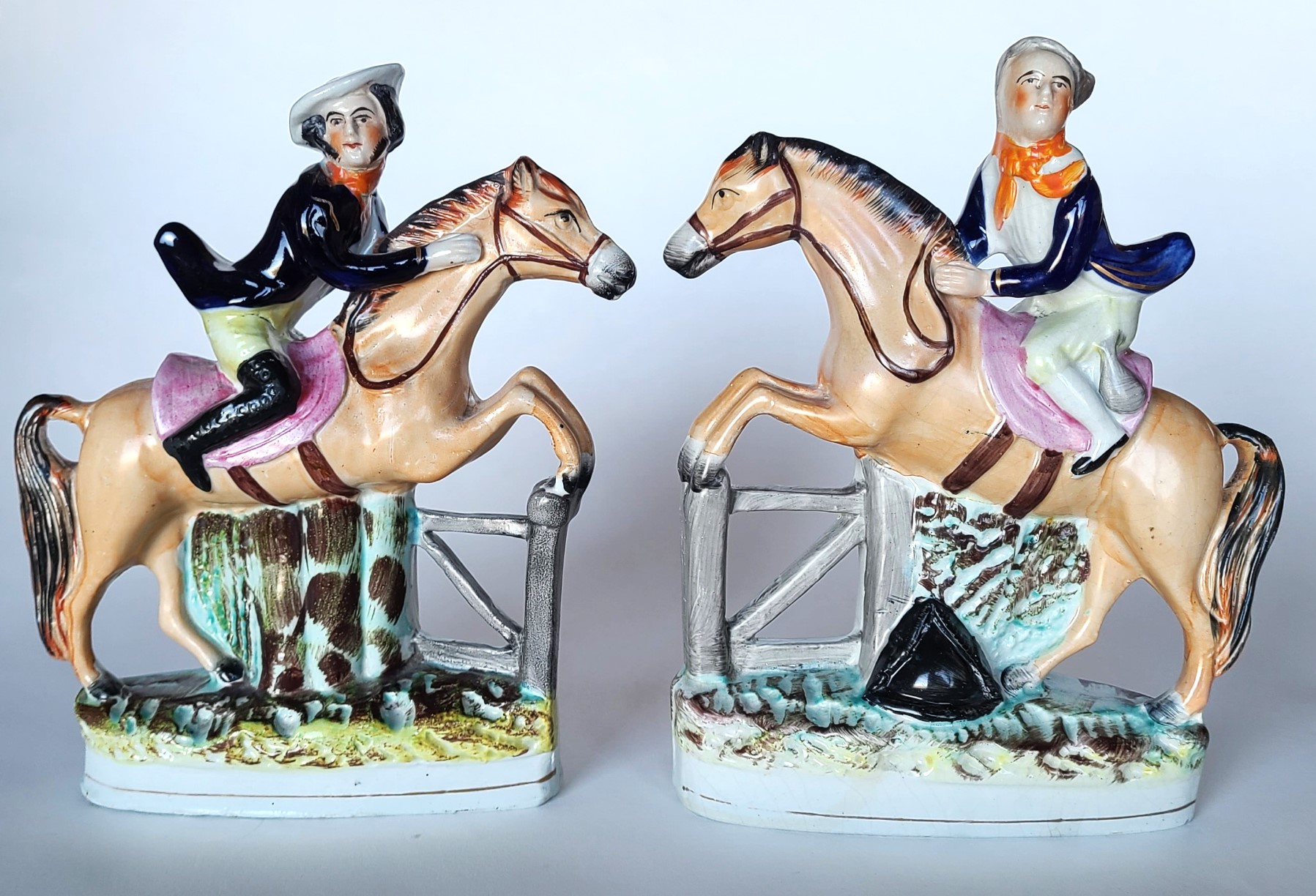
Tam O’Shanter and John Gilpin
This is a very rare pair of figures portraying Tam O’Shanter and John Gilpin. They stand approximately 8.6″ and 9.0″ tall, and date to approximately 1845.
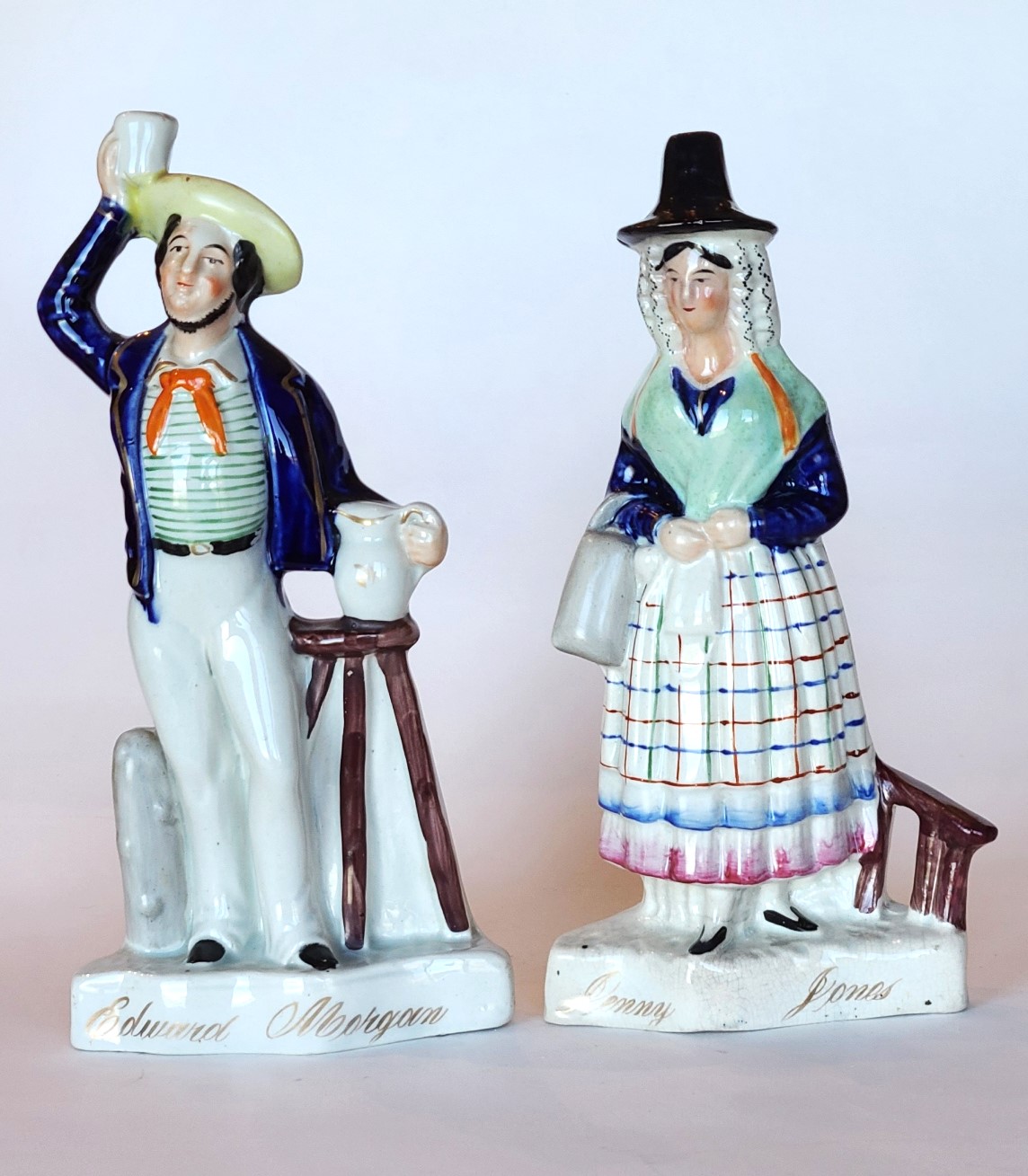
Edward Morgan and Jenny Jones
This is a rare pair of figures portraying Edward Morgan and Jenny Jones, titled with gilt script. The romantic tale of Morgan and Jones was set to music in 1825 by Charles James Mathews.
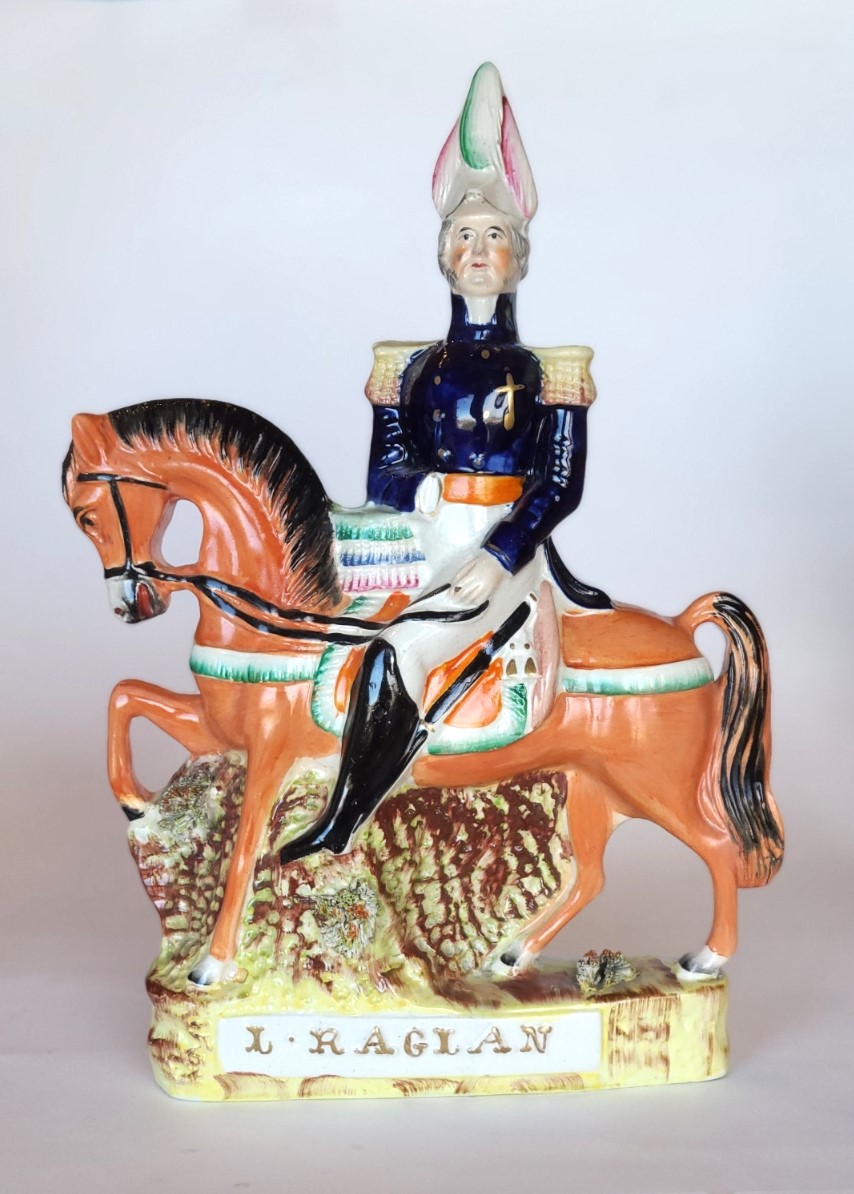
Field Marshal Fitzroy Raglan
This is a rare figure of Field Marshal Fitzroy Raglan. The figure stands about 12 1/4” tall and dates to about 1854.
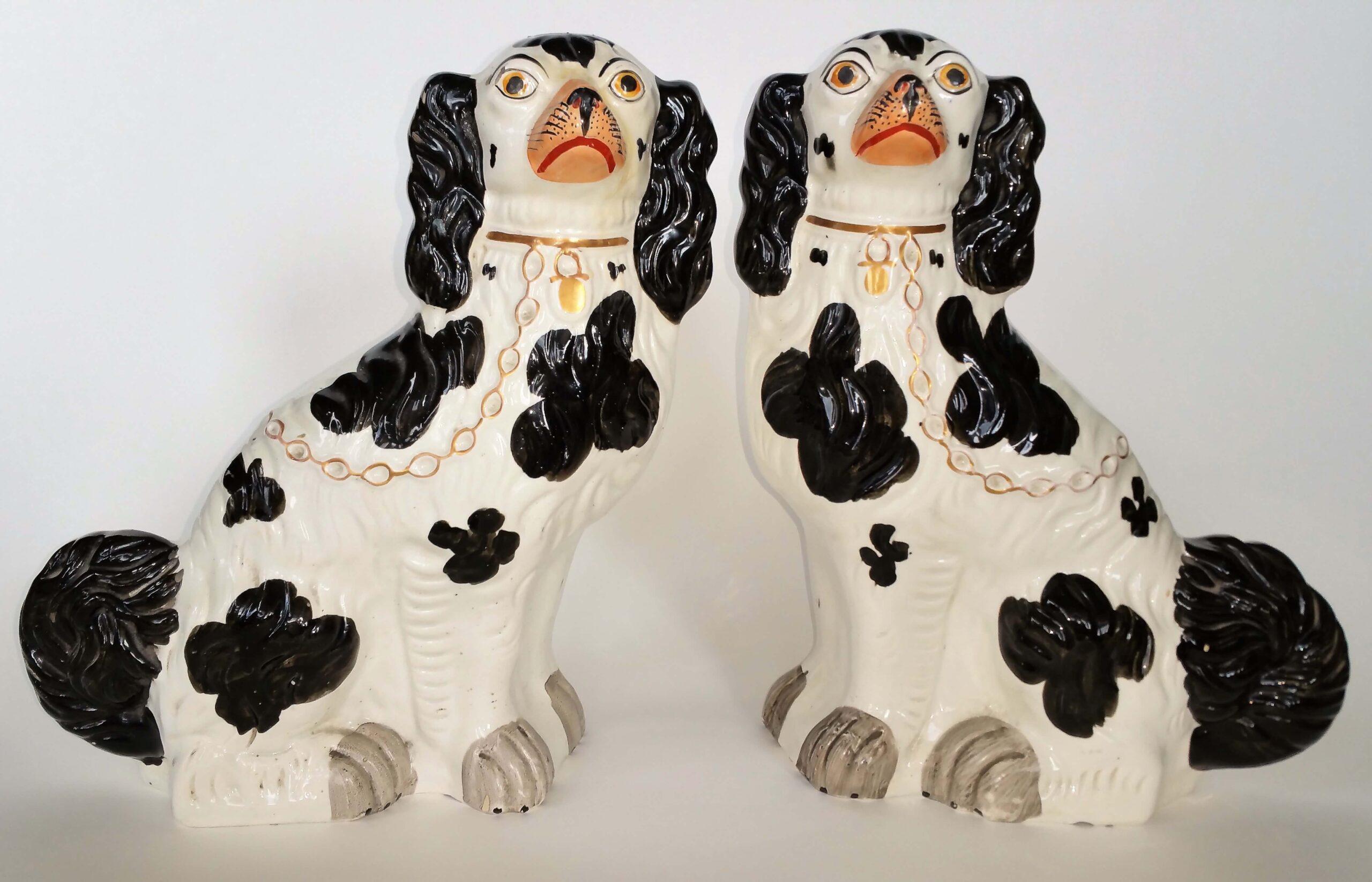
Black and white spaniels
This is fine pair of #1 black and white Staffordshire spaniels. They have a raised number one on the underside, designating them as the largest in a series of six sizes, number six being the smallest.
Membership
We warmly welcome new members – join us for free!
Wherever you are in the world, whether you are an experienced collector, a researcher interested in the folk art of England, or just someone who is intrigued by Staffordshire figures, please join us and get the rest of this year for free! Stay with us next year and pay an annual fee of £45 / $50 per household in January.
